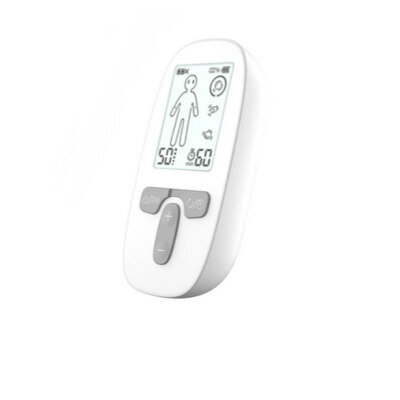Eli Lilly's Twin Neutralizing Antibody Combo Treatment Reduces Risk of COVID-19 Hospitalizations and Death by 70%
|
By HospiMedica International staff writers Posted on 28 Jan 2021 |

Image: Eli Lilly`s Twin Neutralizing Antibody Combo Treatment Reduces Risk of COVID-19 Hospitalizations and Death by 70% (Photo courtesy of Eli Lilly and Company)
New data has shown that treatment with Eli Lilly and Company’s (Indianapolis, Ind, USA) neutralizing antibodies bamlanivimab (LY-CoV555) and etesevimab (LY-CoV016) together reduced the risk of COVID-19 hospitalizations and death by 70%.
Bamlanivimab 2800 mg and etesevimab 2800 mg together significantly reduced COVID-19-related hospitalizations and deaths in high-risk patients recently diagnosed with COVID-19, meeting the primary endpoint of the Phase 3 BLAZE-1 trial. Across 1,035 patients, there were 11 events (2.1%) in patients taking therapy and 36 events (7%) in patients taking placebo, representing a 70% risk reduction. There were 10 deaths total, all of which occurred in patients taking placebo, and no deaths in patients taking bamlanivimab and etesevimab together. Bamlanivimab and etesevimab together also demonstrated statistically significant improvements on all key secondary endpoints, providing strong evidence that the therapy reduced viral load and accelerated symptom resolution.
In the trial, the safety profile of bamlanivimab and etesevimab together was consistent with observations from other Phase 1, Phase 2 and Phase 3 trials evaluating these antibodies. Serious adverse events were reported at a similar frequency in the bamlanivimab and etesevimab together and placebo groups. Across multiple clinical trials, Lilly has collected safety and efficacy data in more than 4,000 participants treated with Lilly's neutralizing antibodies, either bamlanivimab alone or bamlanivimab and etesevimab together.
"These exciting results, which replicate positive Phase 2 data in a much larger set of patients, add valuable clinical evidence about the role neutralizing antibodies can play in fighting this pandemic. While the preliminary nature of Phase 2 results from COVID-19 neutralizing monoclonal antibodies may have limited acceptance of treatment, these Phase 3 data further strengthen the available evidence," said Daniel Skovronsky, M.D., Ph.D., Lilly's chief scientific officer and president of Lilly Research Laboratories. "The death toll from COVID-19 continues to rise around the world and hospitalizations, particularly in the U.S., have reached record highs. These data further support our belief that bamlanivimab and etesevimab together have the potential to be an important treatment that significantly reduces hospitalizations and death in high-risk COVID-19 patients.
"Notably, the 70% decrease in risk of hospitalizations or death seen in this Phase 3 trial of bamlanivimab and etesevimab together is consistent with the reduction in risk of hospitalization or ER visits seen with bamlanivimab alone in the Phase 2 trial. Bamlanivimab alone is authorized for emergency use as a treatment for high-risk patients with mild to moderate COVID-19 in the U.S. and widely available for use," Skovronsky added.
Related Links:
Eli Lilly and Company
Bamlanivimab 2800 mg and etesevimab 2800 mg together significantly reduced COVID-19-related hospitalizations and deaths in high-risk patients recently diagnosed with COVID-19, meeting the primary endpoint of the Phase 3 BLAZE-1 trial. Across 1,035 patients, there were 11 events (2.1%) in patients taking therapy and 36 events (7%) in patients taking placebo, representing a 70% risk reduction. There were 10 deaths total, all of which occurred in patients taking placebo, and no deaths in patients taking bamlanivimab and etesevimab together. Bamlanivimab and etesevimab together also demonstrated statistically significant improvements on all key secondary endpoints, providing strong evidence that the therapy reduced viral load and accelerated symptom resolution.
In the trial, the safety profile of bamlanivimab and etesevimab together was consistent with observations from other Phase 1, Phase 2 and Phase 3 trials evaluating these antibodies. Serious adverse events were reported at a similar frequency in the bamlanivimab and etesevimab together and placebo groups. Across multiple clinical trials, Lilly has collected safety and efficacy data in more than 4,000 participants treated with Lilly's neutralizing antibodies, either bamlanivimab alone or bamlanivimab and etesevimab together.
"These exciting results, which replicate positive Phase 2 data in a much larger set of patients, add valuable clinical evidence about the role neutralizing antibodies can play in fighting this pandemic. While the preliminary nature of Phase 2 results from COVID-19 neutralizing monoclonal antibodies may have limited acceptance of treatment, these Phase 3 data further strengthen the available evidence," said Daniel Skovronsky, M.D., Ph.D., Lilly's chief scientific officer and president of Lilly Research Laboratories. "The death toll from COVID-19 continues to rise around the world and hospitalizations, particularly in the U.S., have reached record highs. These data further support our belief that bamlanivimab and etesevimab together have the potential to be an important treatment that significantly reduces hospitalizations and death in high-risk COVID-19 patients.
"Notably, the 70% decrease in risk of hospitalizations or death seen in this Phase 3 trial of bamlanivimab and etesevimab together is consistent with the reduction in risk of hospitalization or ER visits seen with bamlanivimab alone in the Phase 2 trial. Bamlanivimab alone is authorized for emergency use as a treatment for high-risk patients with mild to moderate COVID-19 in the U.S. and widely available for use," Skovronsky added.
Related Links:
Eli Lilly and Company
Latest COVID-19 News
- Low-Cost System Detects SARS-CoV-2 Virus in Hospital Air Using High-Tech Bubbles
- World's First Inhalable COVID-19 Vaccine Approved in China
- COVID-19 Vaccine Patch Fights SARS-CoV-2 Variants Better than Needles
- Blood Viscosity Testing Can Predict Risk of Death in Hospitalized COVID-19 Patients
- ‘Covid Computer’ Uses AI to Detect COVID-19 from Chest CT Scans
- MRI Lung-Imaging Technique Shows Cause of Long-COVID Symptoms
- Chest CT Scans of COVID-19 Patients Could Help Distinguish Between SARS-CoV-2 Variants
- Specialized MRI Detects Lung Abnormalities in Non-Hospitalized Long COVID Patients
- AI Algorithm Identifies Hospitalized Patients at Highest Risk of Dying From COVID-19
- Sweat Sensor Detects Key Biomarkers That Provide Early Warning of COVID-19 and Flu
- Study Assesses Impact of COVID-19 on Ventilation/Perfusion Scintigraphy
- CT Imaging Study Finds Vaccination Reduces Risk of COVID-19 Associated Pulmonary Embolism
- Third Day in Hospital a ‘Tipping Point’ in Severity of COVID-19 Pneumonia
- Longer Interval Between COVID-19 Vaccines Generates Up to Nine Times as Many Antibodies
- AI Model for Monitoring COVID-19 Predicts Mortality Within First 30 Days of Admission
- AI Predicts COVID Prognosis at Near-Expert Level Based Off CT Scans
Channels
Critical Care
view channel
Wearable Patch for Early Skin Cancer Detection to Reduce Unnecessary Biopsies
Skin cancer remains one of the most dangerous and common cancers worldwide, with early detection crucial for improving survival rates. Traditional diagnostic methods—visual inspections, imaging, and biopsies—can... Read more
Pulse Oximeter Index Offers Non-Invasive Guides for Fluid Therapy
In patients with acute circulatory failure, deciding whether to administer intravenous fluids is often a life-or-death decision. Too little fluid can leave organs underperfused, while too much can cause... Read moreSurgical Techniques
view channel
Robotic Assistant Delivers Ultra-Precision Injections with Rapid Setup Times
Age-related macular degeneration (AMD) is a leading cause of blindness worldwide, affecting nearly 200 million people, a figure expected to rise to 280 million by 2040. Current treatment involves doctors... Read more
Minimally Invasive Endoscopic Surgery Improves Severe Stroke Outcomes
Intracerebral hemorrhage, a type of stroke caused by bleeding deep within the brain, remains one of the most challenging neurological emergencies to treat. Accounting for about 15% of all strokes, it carries... Read morePatient Care
view channel
Revolutionary Automatic IV-Line Flushing Device to Enhance Infusion Care
More than 80% of in-hospital patients receive intravenous (IV) therapy. Every dose of IV medicine delivered in a small volume (<250 mL) infusion bag should be followed by subsequent flushing to ensure... Read more
VR Training Tool Combats Contamination of Portable Medical Equipment
Healthcare-associated infections (HAIs) impact one in every 31 patients, cause nearly 100,000 deaths each year, and cost USD 28.4 billion in direct medical expenses. Notably, up to 75% of these infections... Read more
Portable Biosensor Platform to Reduce Hospital-Acquired Infections
Approximately 4 million patients in the European Union acquire healthcare-associated infections (HAIs) or nosocomial infections each year, with around 37,000 deaths directly resulting from these infections,... Read moreFirst-Of-Its-Kind Portable Germicidal Light Technology Disinfects High-Touch Clinical Surfaces in Seconds
Reducing healthcare-acquired infections (HAIs) remains a pressing issue within global healthcare systems. In the United States alone, 1.7 million patients contract HAIs annually, leading to approximately... Read moreHealth IT
view channel
Printable Molecule-Selective Nanoparticles Enable Mass Production of Wearable Biosensors
The future of medicine is likely to focus on the personalization of healthcare—understanding exactly what an individual requires and delivering the appropriate combination of nutrients, metabolites, and... Read moreBusiness
view channel
Philips and Masimo Partner to Advance Patient Monitoring Measurement Technologies
Royal Philips (Amsterdam, Netherlands) and Masimo (Irvine, California, USA) have renewed their multi-year strategic collaboration, combining Philips’ expertise in patient monitoring with Masimo’s noninvasive... Read more
B. Braun Acquires Digital Microsurgery Company True Digital Surgery
The high-end microsurgery market in neurosurgery, spine, and ENT is undergoing a significant transformation. Traditional analog microscopes are giving way to digital exoscopes, which provide improved visualization,... Read more
CMEF 2025 to Promote Holistic and High-Quality Development of Medical and Health Industry
The 92nd China International Medical Equipment Fair (CMEF 2025) Autumn Exhibition is scheduled to be held from September 26 to 29 at the China Import and Export Fair Complex (Canton Fair Complex) in Guangzhou.... Read more

















